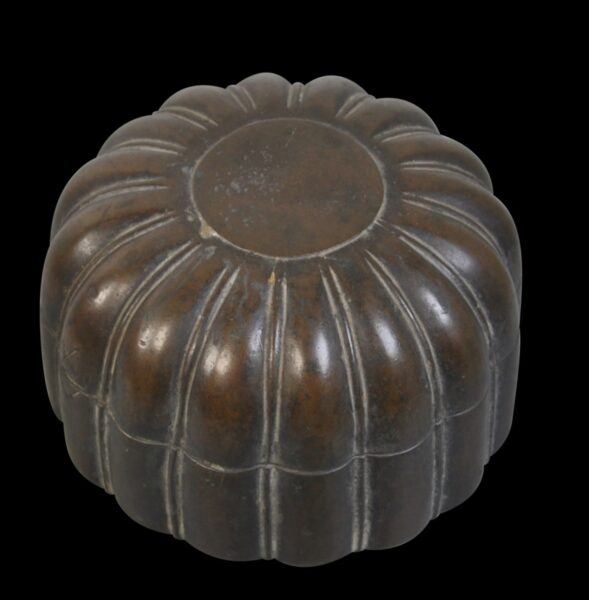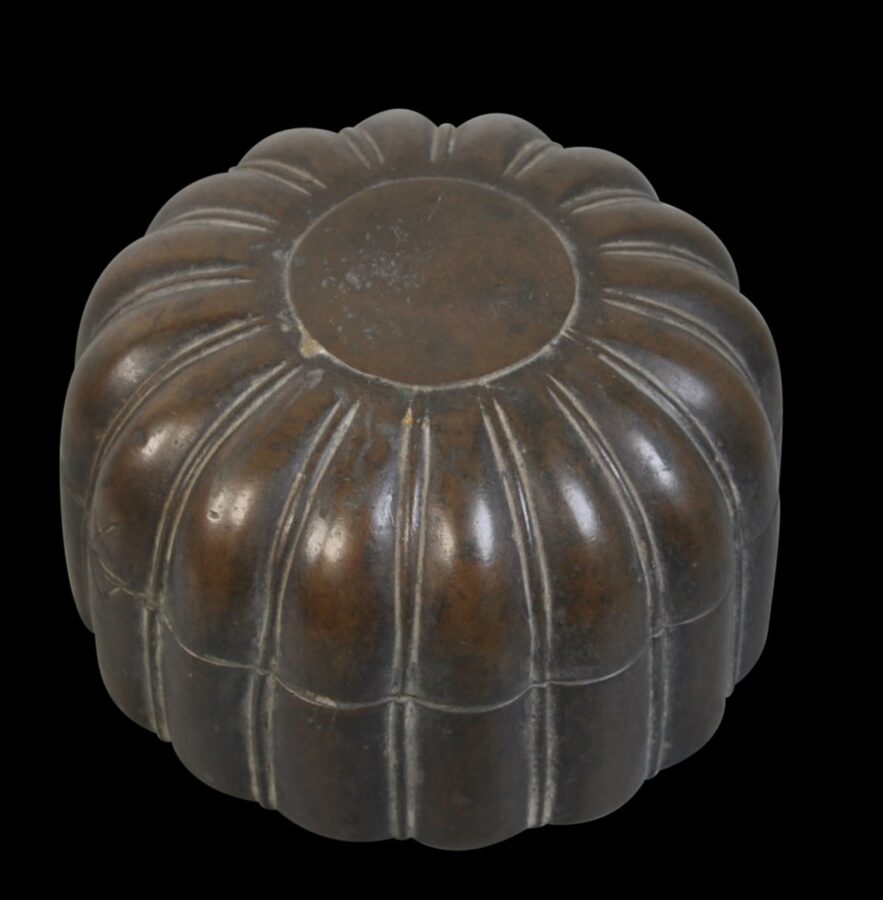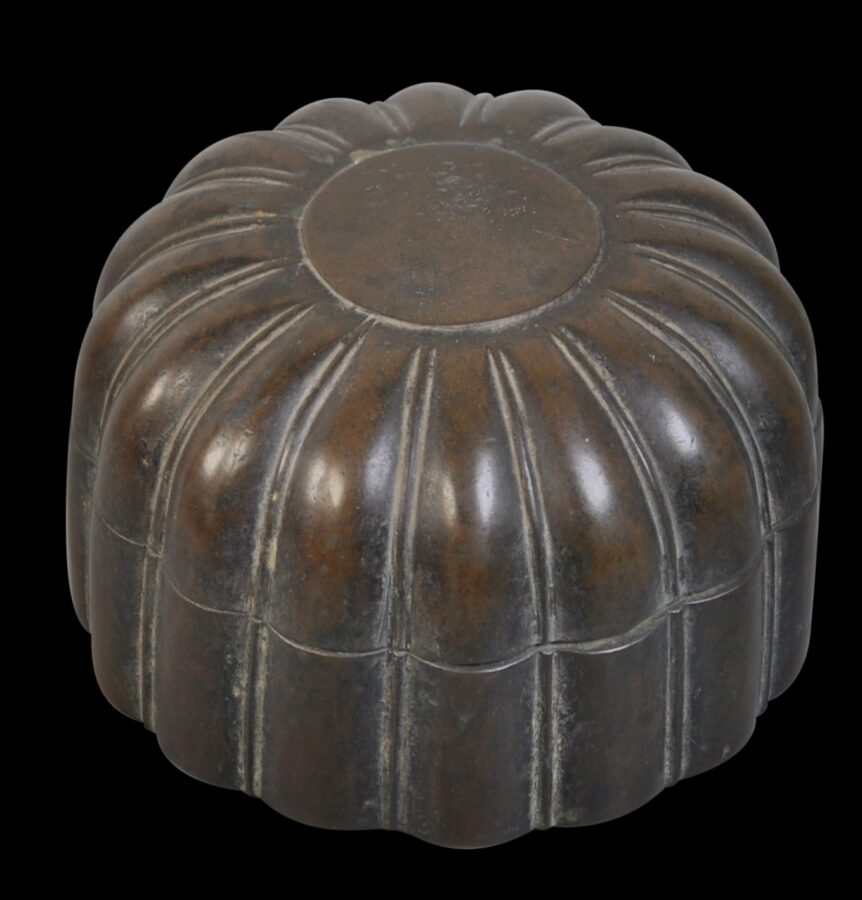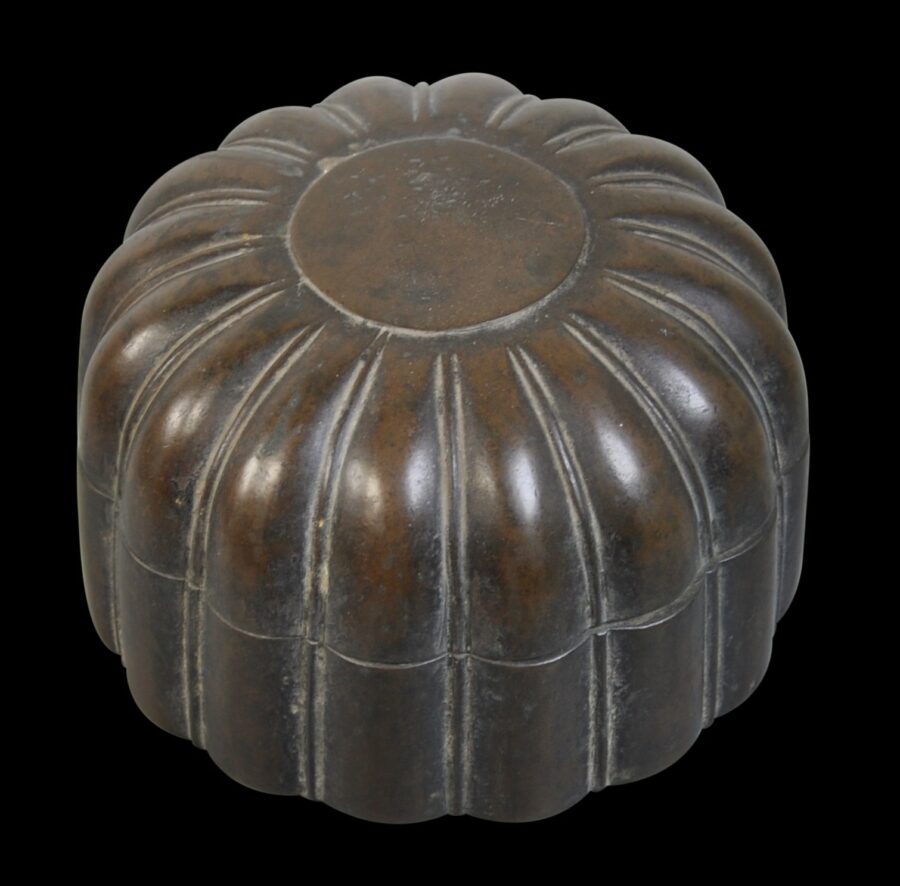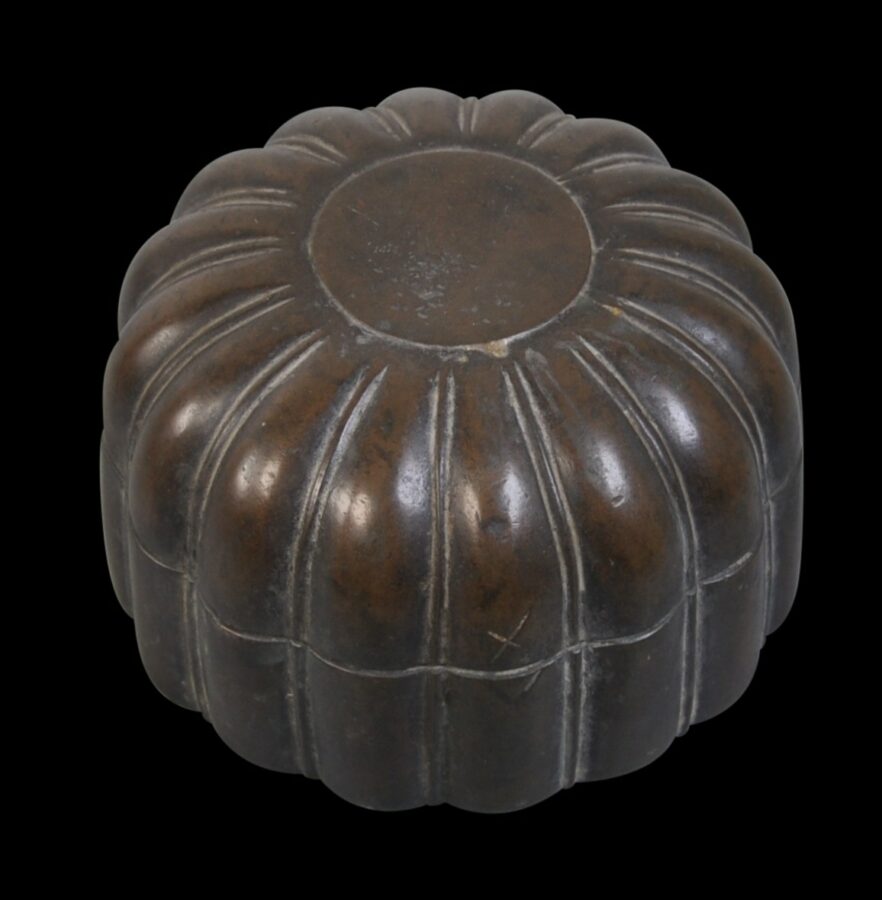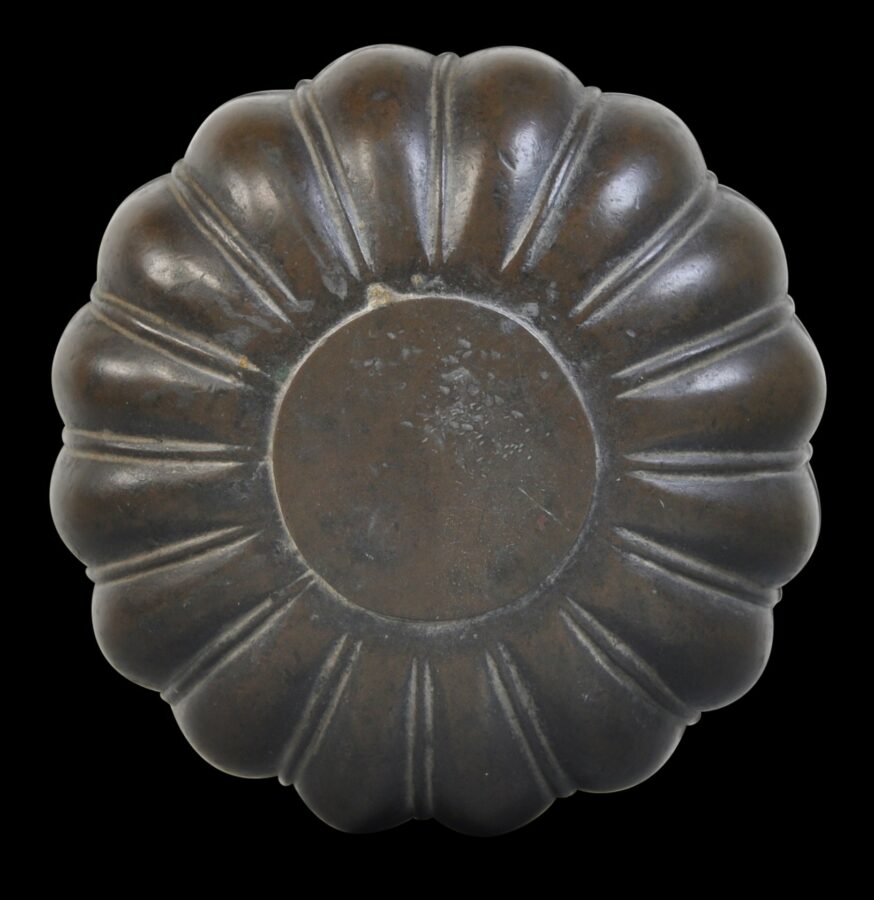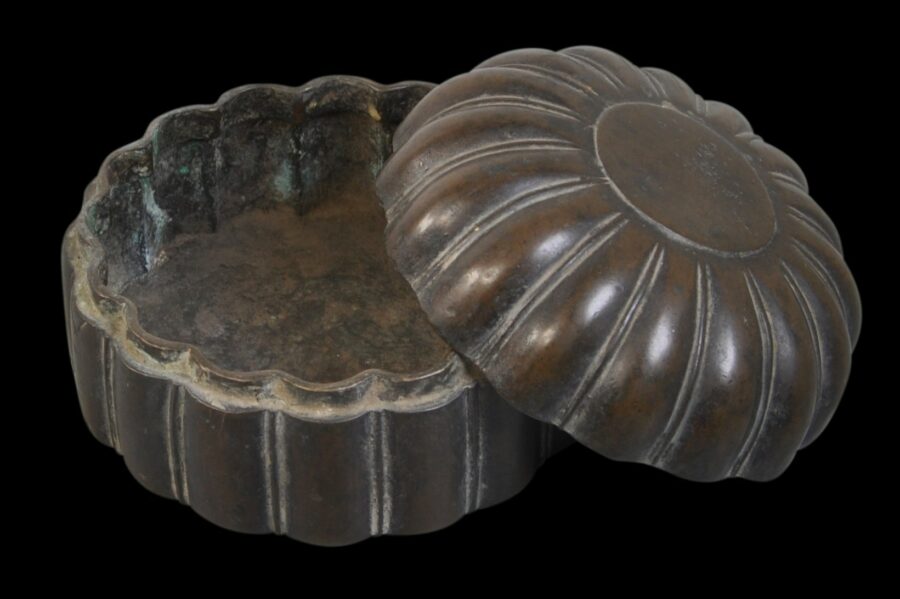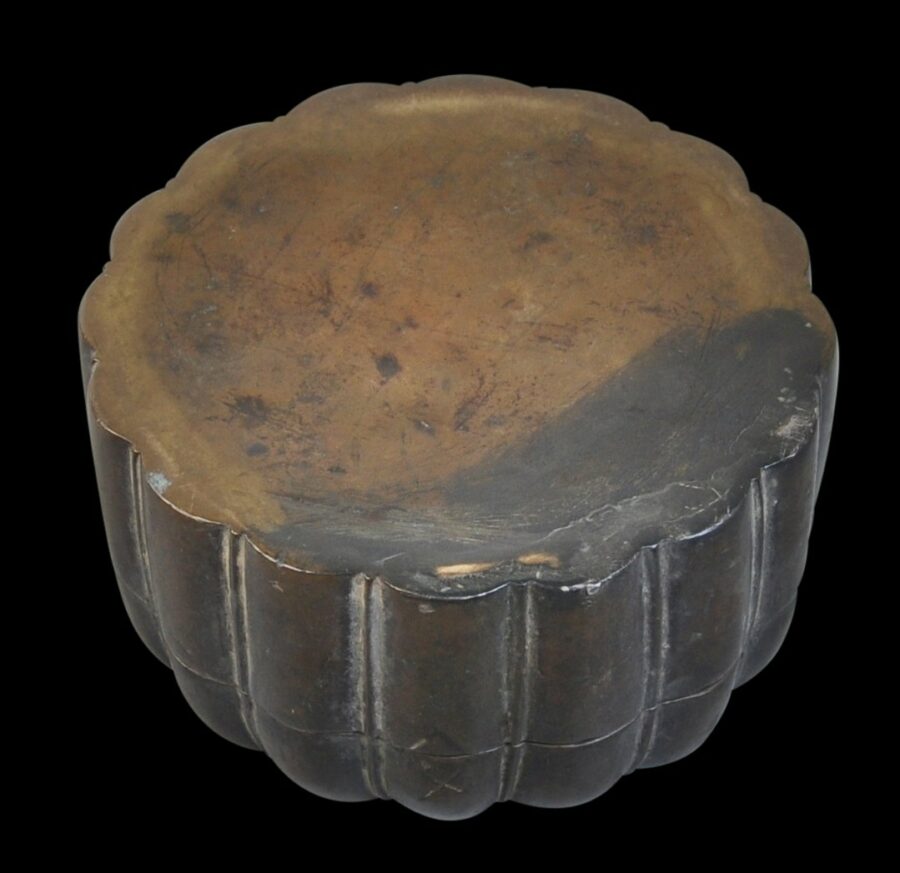Enquiry about object: 9033
Indian Mughal Brass Pandan
Mughal, northern India 17th century
height: 7.8cm, width: 12.5cm, weight: 882g
Provenance
UK art market
This betel or paan box or pandan of brass is of circular form with a convex lid and with deeply ribbed sides giving it a Mughal architectural quality.
The construction is solid and the lid fits well. The lid fits to the base by matching up small etched motifs on the outside of the box.
Betel or paan chewing is a habit that unites Southeast Asia with the Indian sub-continent, parts of southern China and the Western Pacific. Whereas alcohol was associated with feasting, betel was the everyday social lubricant: it was offered to visitors to one’s home. And just as the English developed elaborate tea sets, Indians and Southeast Asians developed elaborate betel nut sets.
The actual nut comes from the areca palm tree. Typically, it is sliced, mixed with lime (usually obtained from crushed seashells) and then wrapped up in a betel creeper leaf and chewed. The lime reacts with compounds in the nut to produce alkaloids which give a mild narcotic effect.
The form of this pandan is seen occasionally in Mughal miniature paintings, often resting at the feet of courtiers who are seated on carpets amid cushions whilst partaking of betel or paan.
The example here is in fine condition with a lovely chocolate-brown patina.
References
Zebrowski, M.,Gold, Silver & Bronze from Mughal India, Alexandria Press, 1997.


